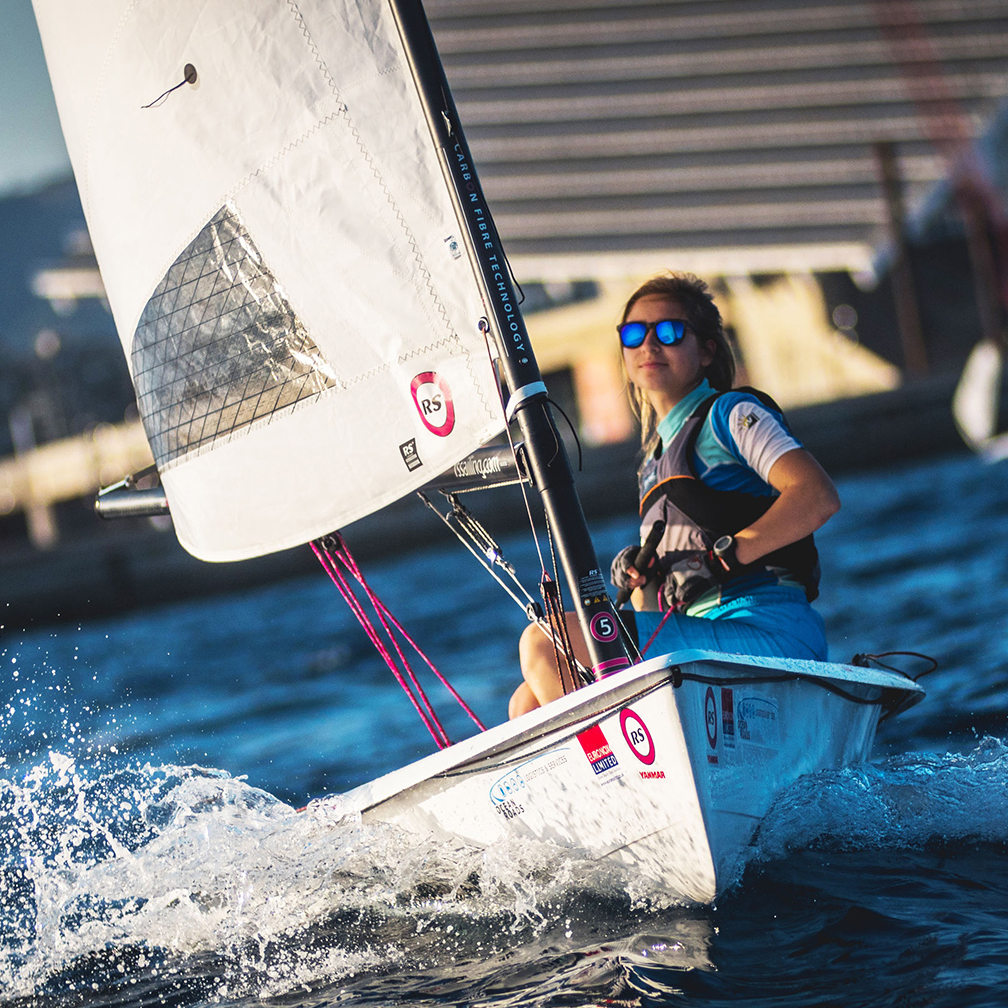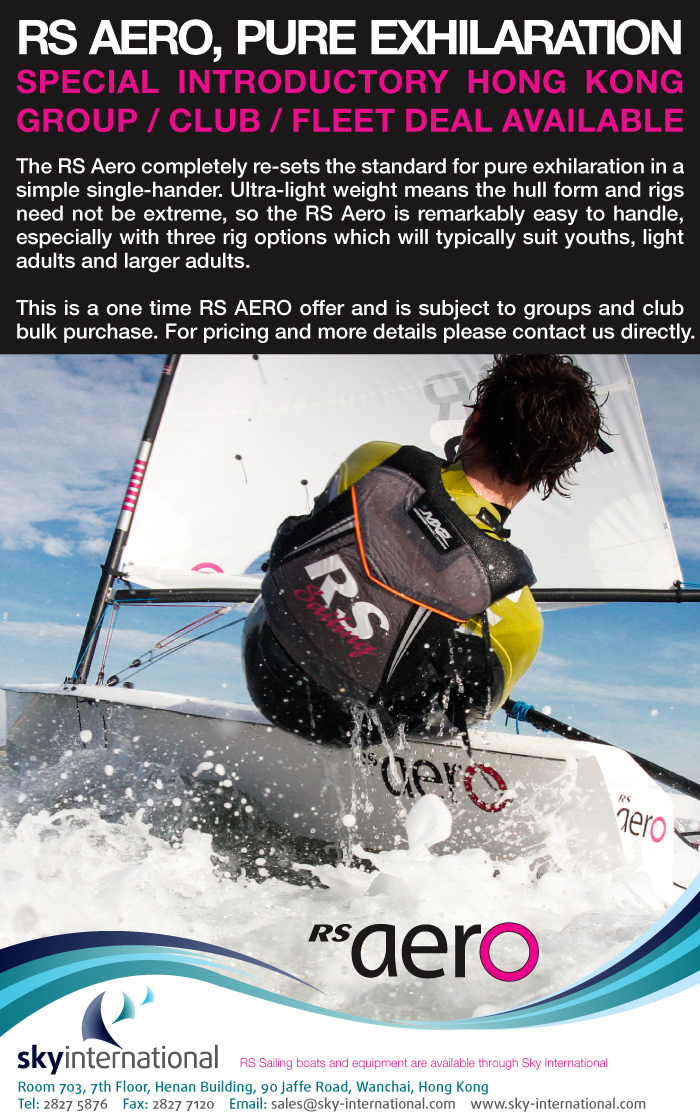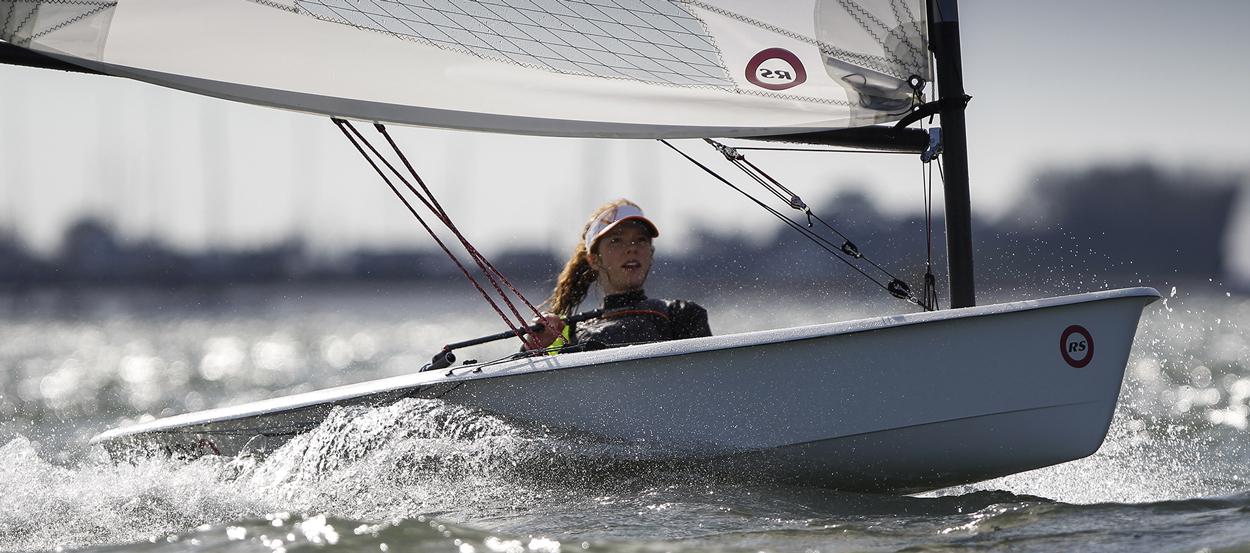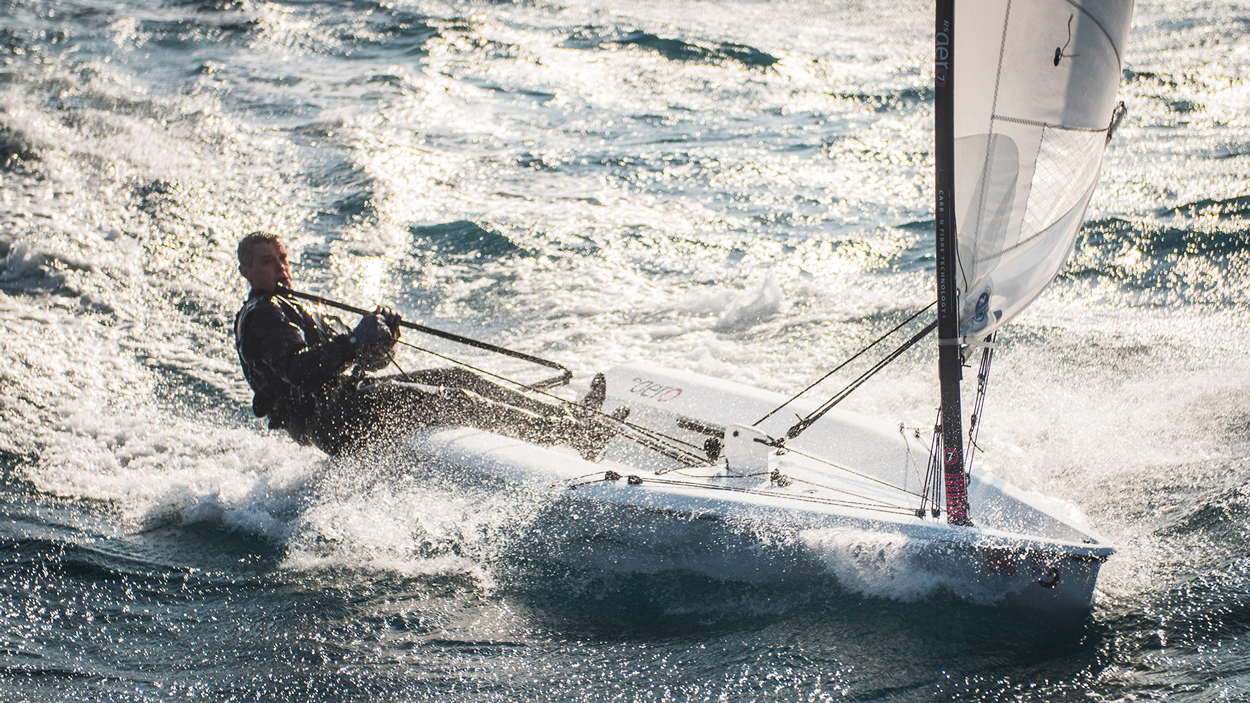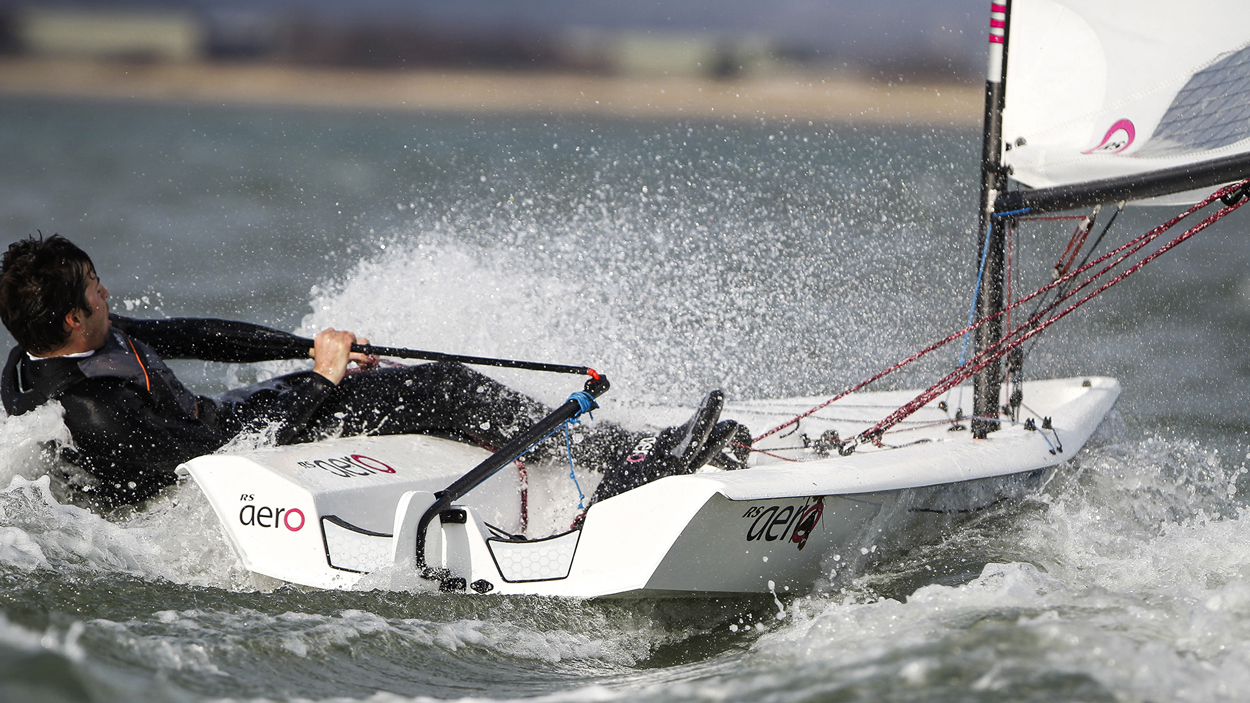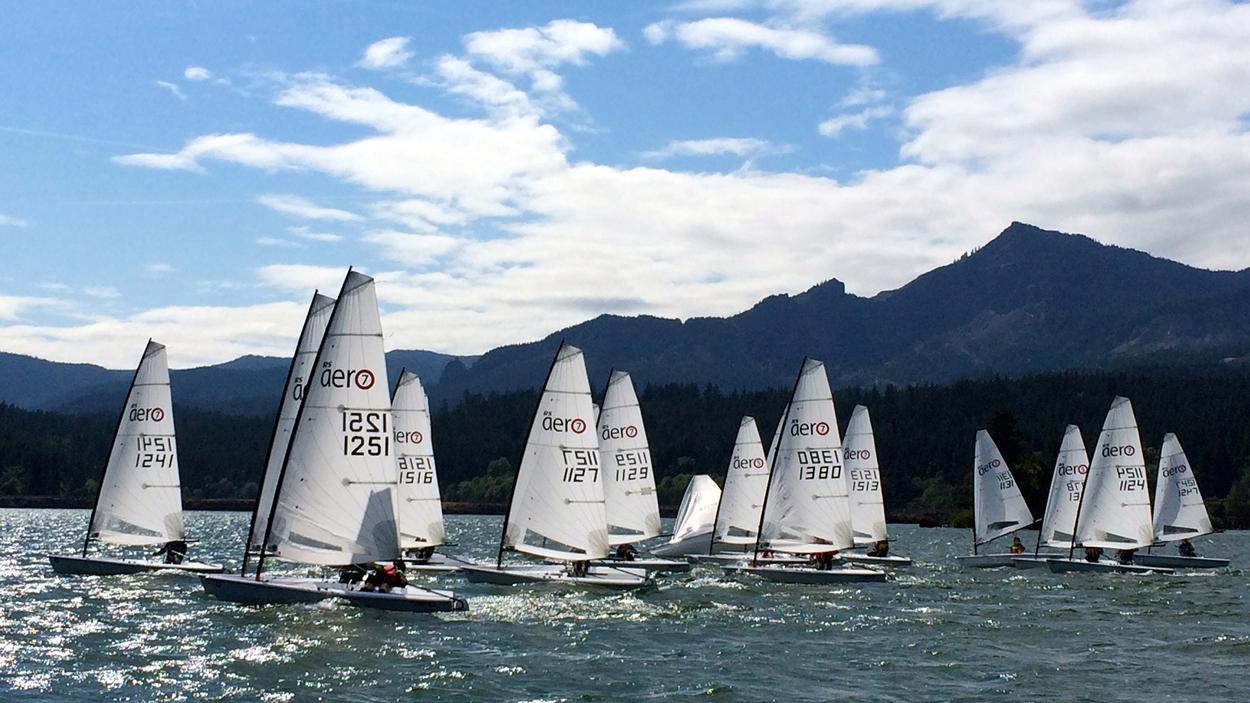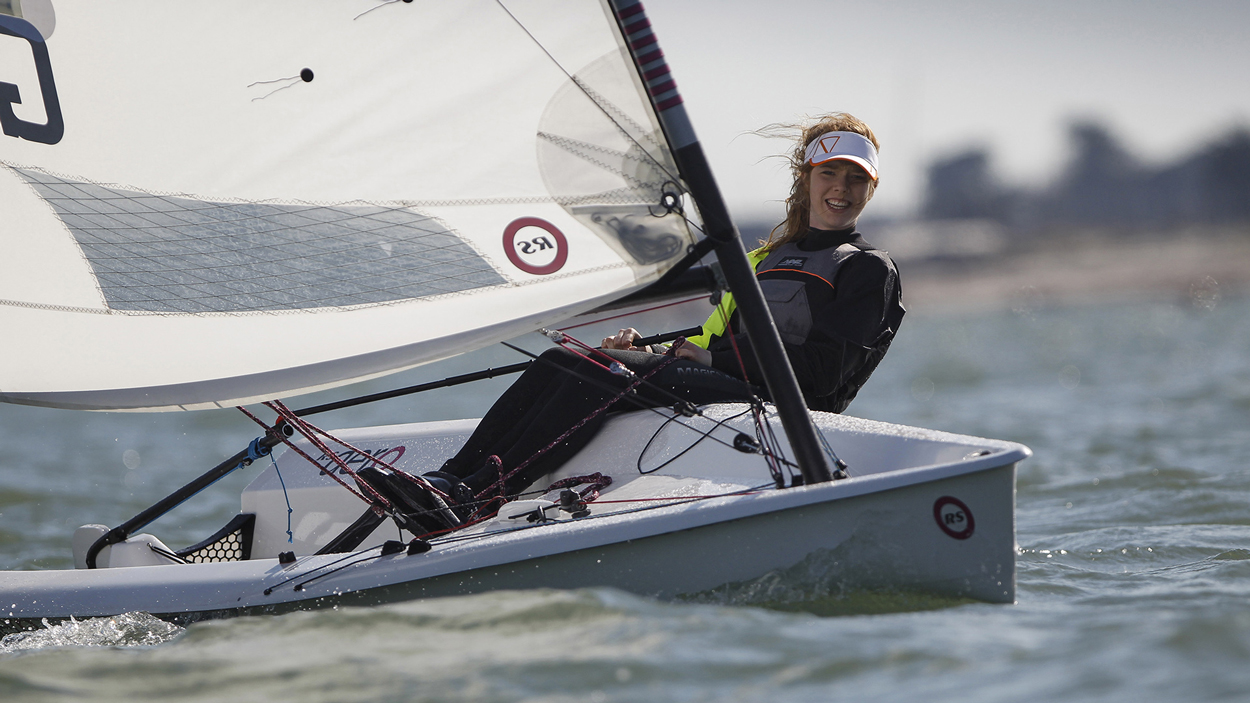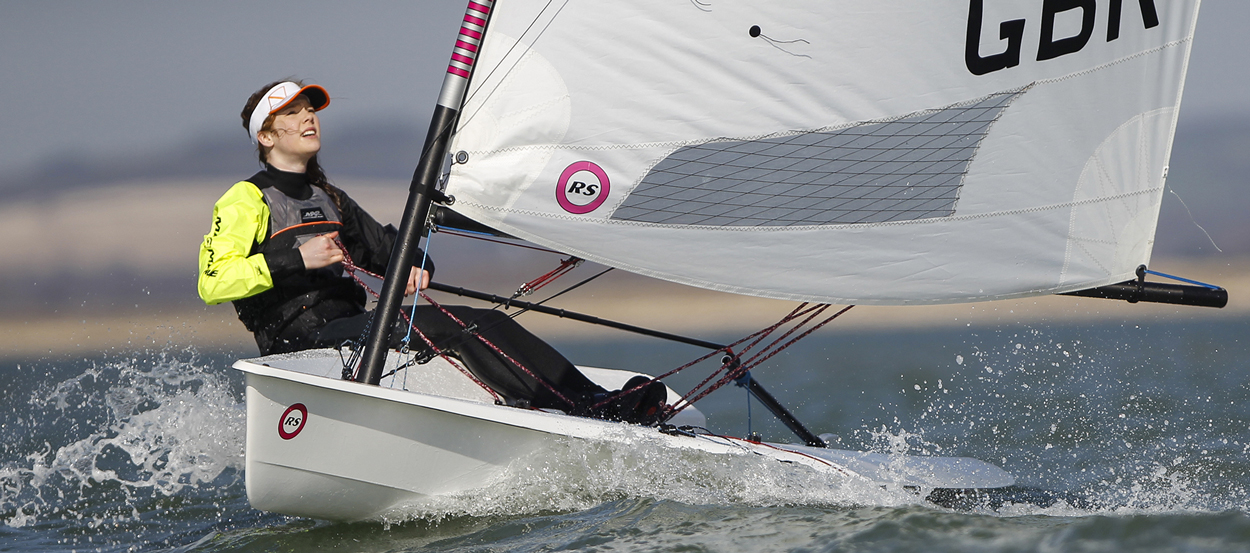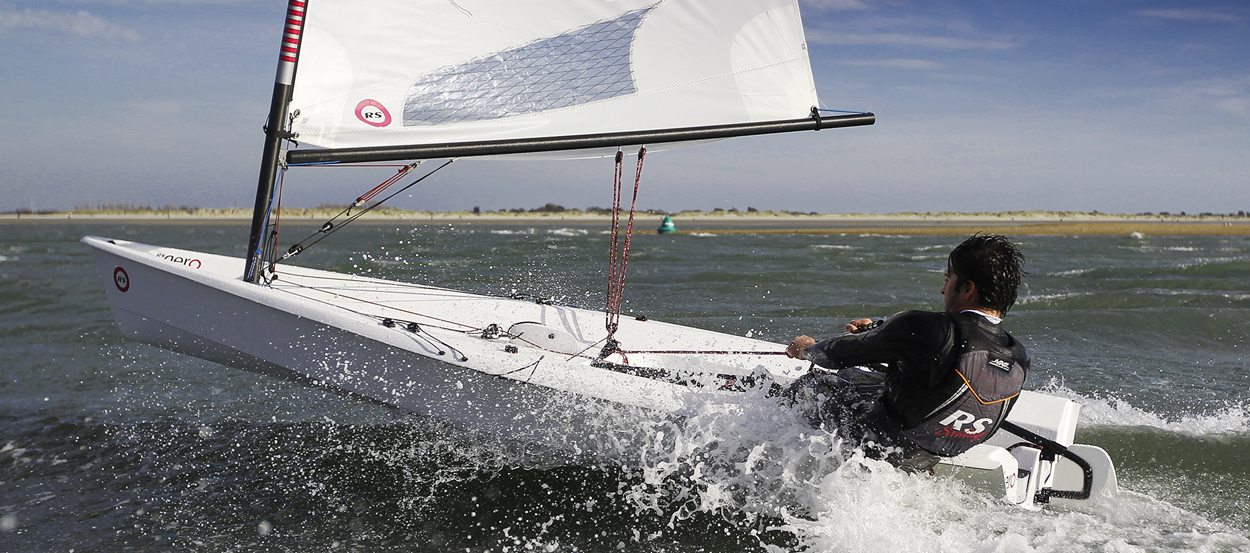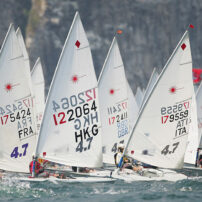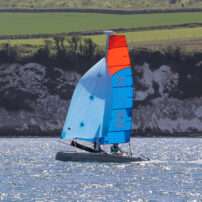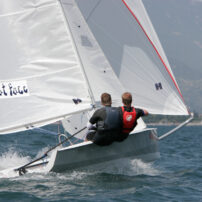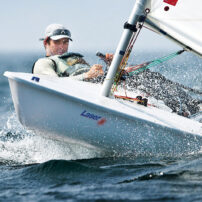RS Aero
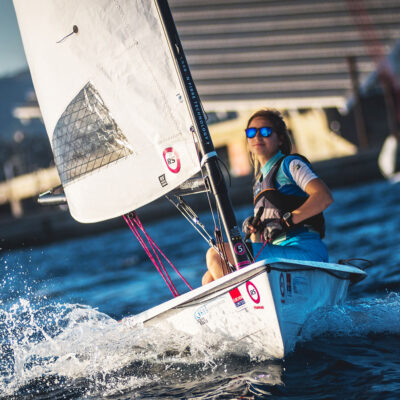 After years of development RS believe the Aero is the most technically advanced boat in its sector. Which explains why its the most exciting and best-selling modern single-hander. Easily handled too. Astonishingly, the RS Aero weighs about the same as an Optimist. That drives everything about its incredible user friendliness through transporting, rigging and launching – before you even experience the addictive sensations afloat.
After years of development RS believe the Aero is the most technically advanced boat in its sector. Which explains why its the most exciting and best-selling modern single-hander. Easily handled too. Astonishingly, the RS Aero weighs about the same as an Optimist. That drives everything about its incredible user friendliness through transporting, rigging and launching – before you even experience the addictive sensations afloat.
Complex thinking leading to beautiful simplicity. The RS Aero ignites the pure excitement of sailing in its least complicated form. Three rig sizes enable youths, ladies and guys to enjoy the ride. Already an International Class, the community is building fast for the most competitive sailors. It’s a phenomenon.
Three rig options typically suit:
- Youths – RS Aero 5
- Women & light men – RS Aero 7
- Men – RS Aero 9
The RS Aero ignites the excitement of sailing in its least complicated form – complex thinking leading to beautiful simplicity. It is affordable and, with RS Sailing’s global distribution network, assured of worldwide success.
RS Aero Features
Exhilaration
- Ultra-light weight changes the game afloat and ashore.
- Sail an RS Aero for the pure exhilaration
- Lift on the roof alone or with a youngster – rig in minutes – launch with ease.
World Sailing International Class
- Incredibly fast growing around the world – by the best-selling modern single-hander.
- Event programmes building quickly
- World Championships from 2017 onwards
- One-design competition – RS community etho
Hull size
- Testing shows that 4m length is long enough to support the larger helmsman, without being a handful for small sailors to launch and recover
- 1.4m beam conveniently fits a normal roof-rack
Chine
- A chined hull is the correct approach, giving the sailor more reserve stability
- The chine peels off spray when sailing down wind and gives greater dynamic stability
- The flatter hull panels of a chined hull allow construction from normal flat sheets of PU foam, reducing the weight of the core bond (cores designed to mould around tighter curves “absorb” more resin into their score cuts or honeycomb).
- The chine sits just below the water line amidships – for several advantages:
- A 35kg sailor gains approximately the same waterline beam and hence the same hull form stability as a heavier sailor
- The waterline beam and wetted surface does not change significantly with an increase in helm weight
- The RS Aero is so light there is less inertial mass to pull against when moving in during a lull or header – compensated for by the flatter hull and increased form stability from the buoyant chine area
- The chine has a small lip to reduce spray drag and for precise positioning of the computer cut foam panels during construction
Fine bow
- Fine bow for upwind sailing, stable mid sections and a relatively wide transom.
- Transom shape fine tuned to ensure the RS Aero planes bow up (analogous to the trim tabs on a powerboat stern).
- Vertical bows are common in “box rule” dinghies and yachts built to rating systems. We chose a raked bow for this one-design because measured waterline length pressures don’t apply and:
- It leads to greater flare in the forward 20% of the topsides, giving reserve buoyancy and forgiving handling in waves – it is easier and more efficient during the lamination process, leading to cost and consistency efficiencies in volume production – it makes the Aero’s valuable stacking system possible. Function over fashion.
Gunwale design
- As the RS Aero is relatively narrow we have optimised the width with the modern approach of running the gunwale parallel to the centreline in the aft half of the boat. Advantages are:
- Maximum righting moment wherever the helm sits out, irrespective of fore and aft position
- When capsized the topside buoyancy is kept to a minimum – the boat floats lower allowing easier reach to the daggerboard
- The abrupt change of deck line at the front of the cockpit allows a fine bow without pushing out the overall width or the topsides forward
- Easier to sit alongside a RIB or the dock
- More space to tie the mast sections alongside the boat on a roof-rack
- Store or transport more easily on its side
- RS have used the “biscuit tin” (smooth) join for close to 10 years on the RS Elite, but chose a U section gunwale for the RS Aero because:
- It creates an important carbon laminate “box frame” around the boat and distributes rig loads through a light, efficient structure – it makes righting the boat from inverted faster and safer – the gunwale gives a significantly drier and more pleasant ride upwind & tight reaching – it makes the boat much easier to hold when launching and recovering, especially in waves.
Stacking system
- The RS designed the Aero to stack.
- This allows three boats to be stacked on a conventional road trailer base with small pads between them – double and triple trailers are unnecessary.
- Efficient stacking allows over 30 boats to be loaded into a 40’ shipping container – minimising freight cost and carbon footprint in transport to dealers or regattas.
Construction
- Every aspect of the simple shape has been considered to minimise weight and maximise cost-efficient manufacture:
- Flatter panels on the chined hull allow construction from normal flat sheets of PU foam, reducing the weight of the core bond
- “Chine” angles on the deck add form stiffness without additional weight
- Low surface area reduces weight and material costs
- Simple shape reduces time in the manufacturing process
- Epoxy resin is used for its high strength and low water absorption properties.
- Woven glass matt is used throughout the hull.
- Carbon fibre is used in all high load areas such as the hull and deck around the mast step, the hiking region of the deck, all around the gunwales and transom.
- Due to its ultra-light weight and the high elongation at break (shatter resistance) of the epoxy resin system, the RS Aero has proved to be remarkably durable.
- Yet the boat is so astonishingly light it is possible to carry it up the beach single handed by holding the top of the daggerboard and the boom! Pulling the boat up the beach on a trolley makes you smile.
- Young sailors and small women can lift the RS Aero onto a roof-rack.
- The tooling has been CNC machined to give maximum control over shape and symmetry.
Dynamic Three Rig System
- Three rigs of differing sail areas to cater for crew weight ranges: Aero 5, Aero 7 and the Aero 9.
- Rigs with sufficient control to totally flatten and twist the head of the sail upwind. Reducing the healing moment. This allows a greater sail area to be carried – a big benefit downwind and in lighter conditions.
- Working closely with a world-leading carbon fibre tube manufacturer RS have produced the three rigs using a common top-mast and boom. While radically differing stiffness bottom sections. The differing deck-level bend and stiffness of the three rigs ensure the boat is well balanced, without resorting to a permanently pre-bent lower section for the smallest sail.
- Even with the smallest RS Aero rig the sail-area : hull-weight ratio is significantly higher than most existing hiking single-handers, due to the incredibly light weight of the RS Aero. So even the RS Aero 5 enjoys the amazingly responsive feel that makes the boat so exciting.
- The largest rig is 5.5kg lighter than the equivalent in aluminium alloy and cutting-edge production method provides for tight stiffness and weight control.
- The tracked mast and halyard are more practical than a sleeved luff – much easier when stepping mast in breeze and suiting full length top battens.
- The rig is positioned well forward in the boat to provide a good distance between the mast and the centre-mainsheet to reduce sheet loads and for ease of gybing, without the risk of snagging associated with a transom led mainsheet.
Sails
- This is the greatest area of conflict between styling pressures and the performance requirements of the RS Aero.
- It is not possible to produce a Mylar sail that will cope with the wide range of mast bend of a responsive carbon rig. This is due to the lack of bias (diagonal) stretch of the fabric. Mylar film is stable in all directions.
- Therefore a high denier Dacron sail fabric is used.
Foils
-
- The RS Aero has a vertical daggerboard for ease of use.
- The daggerboard is glass/carbon construction from CNC milled tooling, to a modern section. Developed to reduce downwind drag whilst still generating enough lift upwind.
- The profile is designed to fill the daggerboard hull slot until the point where the knuckle is reached. This minimises drag.
- The tapered tip below the knuckle reduces tip losses.
- Evidence exists that a leading edge knuckle provides greater stability of flow – it is not uncommon in birds!
- Evolved during testing, the rudder blade’s low drag section and surface area are extremely effective.
- The custom-designed, high grade alloy rudder stock is of minimalist size.
- The rudder blade can be rotated to vertical whilst ashore and is well supported at all angles whilst afloat.
SPECIFICATION
 Standard
Standard
 Optional
Optional
| Standard RS Aero 5 |
Standard RS Aero 7 |
Standard RA Aero 9 |
||
| Designer | Jo Richards/RS Sailing |  |
 |
 |
| Length | 4m (13’2″) |  |
 |
 |
| Beam | 1.4m (4’7″) |  |
 |
 |
| Hull weight | 30kg (66lb) |  |
 |
 |
| Sail area RS Aero 5 | 5.2m² (54ft²) |  |
||
| Sail area RS Aero 7 | 7.4m² (77ft²) |  |
||
| Sail area RS Aero 9 | 8.9m² (93ft²) |  |
||
| Mast | 2-part carbon fibre with track & halyard |  |
 |
 |
| Boom | Carbon fibre with centre mainsheet |  |
 |
 |
| Daggerboard | Epoxy composite – foam core |  |
 |
 |
| Ruder blade | Epoxy composite – foam core |  |
 |
 |
| Rudder stock | Aluminium casting – custom design |  |
 |
 |
| Toe strap | Padded & adjustable |  |
 |
 |
| Control lines | Split & cleated on either side deck |  |
 |
 |
| Tacktick bracket | Carbon fibre |  |
 |
 |
| Velocitek bracket | Carbon fibre |  |
 |
 |
| GoPro bracket | Carbon fibre |  |
 |
 |
The RS Aero is available in a couple of setup options, please go to the official site www.rssailing.com to see the full range of options. We are also here to help too, feel free to get in touch and we can help with pricing and details, please call +852 2827 5876 or use our contact page.

